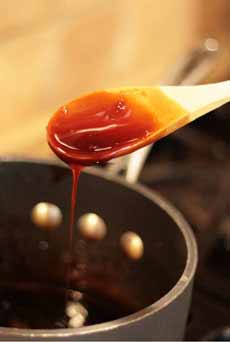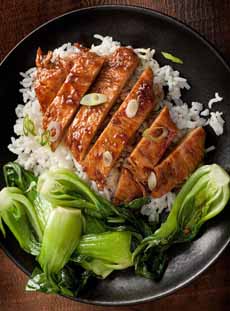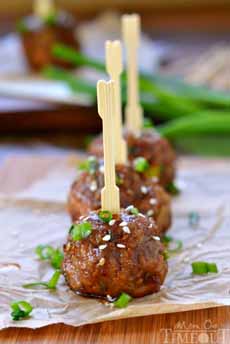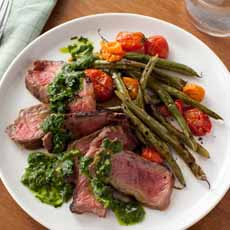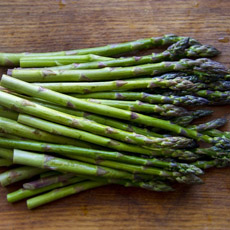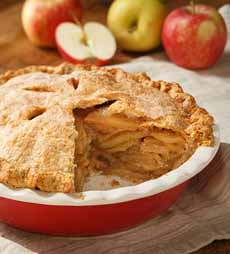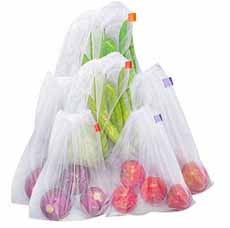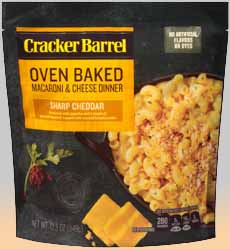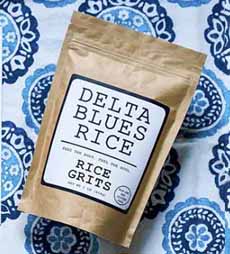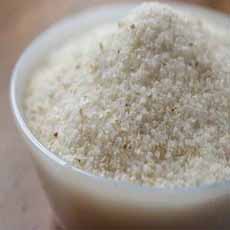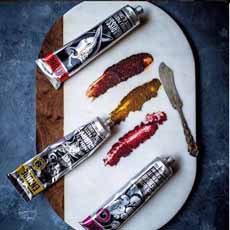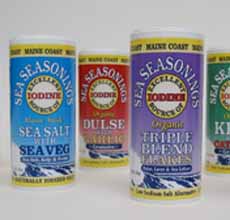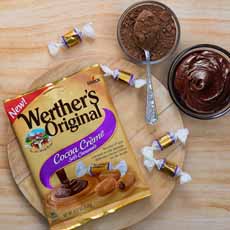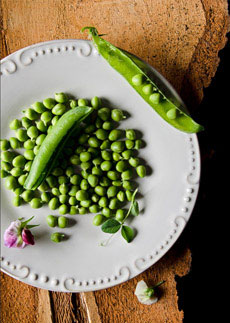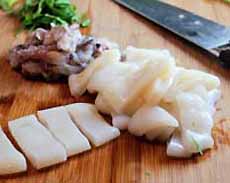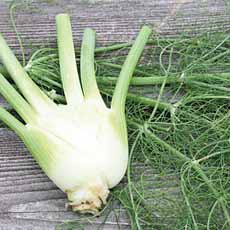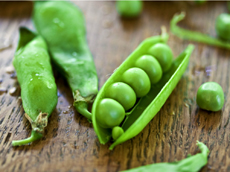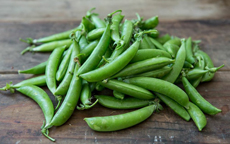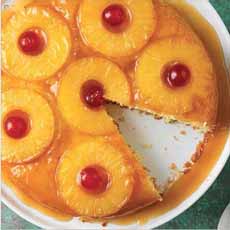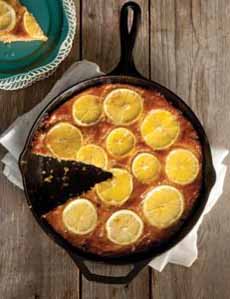|
If you’ve never had an upside-down cake, today’s the day: April 20th is National Pineapple Upside Down Cake.
Why are cake pans round? The answer is below, with the history of cake pans.
With an upside-down cake, fruit is set on the bottom of the pan, topped with cake batter.
When the cooking is complete, the skillet is inverted onto a plate, such that the fruit is now on top, although it was baked upside-down.
THE HISTORY OF THE UPSIDE DOWN CAKE: SCION OF THE SKILLET CAKE
This cake was originally made on the stove top in a skillet, and called skillet cake (photo #4). Today, it’s the same process, but with the benefit of cake pans and ovens.
(Want to be authentic with a skillet and the stove top? No one will stop you! Those who want to go really authentic should try cooking it over a campfire or wood fireplace.)
To make a skillet cake, fruit is set on the bottom and the batter poured on top. When the skillet or pan is inverted, the fruit that was once at the bottom forms a decorative topping. Any fruit can be used.
When canned pineapple rings became available in the first half of the 20th century, Pineapple Upside Down Cake became the rage—often with maraschino cherries in the center of the pineapple rings.
As the recipe evolved, cooks put their skillets in the oven to bake. Nordicware, creator of the bundt pan, created a special round pan with indentations for the pineapple slices (photo #6), guaranteeing a perfect presentation.
To show how popular the cake became, they also make mini pans for individual Upside-Down Cakes.
Check out these upside down cake recipes:
Blood Orange Upside Down Cake (photo #2)
Upside-Down Ginger-Pecan Peach Pie
Upside Down Irish Whiskey Cake
Upside Down Cake is related to Tarte Tatin, an accidental upside-down pie from 1880s France.
Also check out the different types of cakes.
THE HISTORY OF CAKE PANS
Why are cakes round?
Generally, the round cakes we know today are descended from ancient breads, before there were baking pans of any kind.
Yeast-risen breads and cakes were made by hand, patted into balls and baked on hearthstones, griddles, or in low, shallow all-purpose pans.
By the 17th century, cake hoops made of metal or wood were placed on flat pans to shape cakes.
According to food writer Elizabeth David, in the seventeenth century, tin or iron hoops (photo #4) were increasingly used and to shape cakes, and are frequently mentioned in the “cookery books” (think of the modern flan ring, but much deeper).
The hoop was placed on an iron or tin sheet, with a layer of floured paper on the bottom (think of today’s parchment paper). The sides of the hoop were buttered to ease removal of the baked cake.
You can find “these or similar directions offered over and over again in Eliza Smith’s The Compleat Housewife, first published in 1727 (which has recipes for 40 cakes, the large ones being yeast-leavened).
In the preface of her book, Mrs. Smith says that her recipes reflect some 30 years of experience, so it is likely that her methods date back to the previous century.
Some recipes direct the reader to bake the cake in a paper hoop (oiled so not to burn), which was used in kitchens of the 1600s [source].
Wooden hoops were also fairly common. Some cooks preferred them to tin, perhaps because they didn’t rust and thus were easier to store. Wood also didn’t overheat, so were less likely to burn the sides of the cake in those primitive ovens.
Over time, baking pans in various shapes and sizes became readily available to the general public. By the 17th century, it was common for a western kitchen to contain a number of skillets, baking pans (including cake pans with bottoms), a kettle, and several pots, along with a variety of pot hooks and trivets.
In the American colonies, these items would have been produced by a local blacksmith from iron, while brass or copper vessels were more common in Europe.
Improvements in metallurgy during the 19th and 20th centuries enabled the economical production of pots and pans from lighter metals such as steel, stainless steel and aluminum [source].
Molded cakes in fancy shapes reached their zenith in the Victorian era (commencing with the crowning of Queen Victoria in 1831).
|
